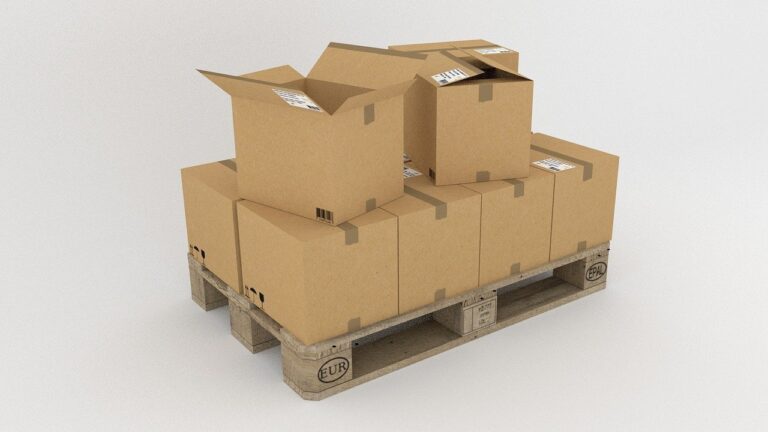Where to dispose of stretch film?
Stretch film, also known as stretch film, is a material used mainly in logistics and packaging. It is a thin, flexible film made of polyethylene, which is characterized by high tensile strength and the ability to return to its original shape after stretching. These properties make stretch film ideal for wrapping a variety of products to ensure their stability and protection during transportation.
It is used in a variety of industries, from the food industry to construction, as well as in everyday life, such as for packing furniture or protecting objects from dust. Stretch film comes in a variety of thicknesses and widths, allowing it to be tailored to specific user needs. It can be used in both manual and machine form, which increases its versatility. It is also worth noting that stretch film is available in both transparent and colored versions, which can be of aesthetic or functional importance, for example, when marking different types of goods. Its popularity is due not only to its packaging efficiency, but also to its ease of use and accessibility.
Summary
- Stretch film is a flexible film used to secure and pack goods.
- Stretch film disposal is important for environmental protection and waste reduction.
- Stretch film can be disposed of in special waste containers or taken to collection centers.
- Before disposing of the stretch film, it should be properly rolled up and secured.
- There are special collection points for stretch film, where you can recycle used film.
Why should stretch film be disposed of properly?
Proper disposal of stretch film is crucial from an environmental perspective. This film, being a plastic, is not biodegradable and can remain in the environment for hundreds of years. Its improper disposal leads to soil and groundwater contamination, which has a negative impact on ecosystems and human health.
Plastics, including stretch film, can decompose into microplastics that are difficult to remove and can be absorbed by aquatic and terrestrial organisms, leading to further environmental problems. In addition, improper storage of stretch film can contribute to landfill fires. Plastics are flammable and their presence in large quantities increases the risk of dangerous situations. That's why it's so important for each of us to make informed decisions about the disposal of this material. Properly segregating and recycling stretch film is not only a duty, but also a way to take care of our planet.
Where can stretch film be disposed of?
Stretch film can be disposed of in a variety of places, but the key is to do so in accordance with local waste segregation regulations. In many cities there are special containers for plastics into which stretch film can be thrown. It's a good idea to pay attention to the markings on the containers and the segregation instructions to make sure the material goes into the right recycling stream.
If there are no dedicated stretch film bins in your area, you can contact your local municipality or waste management company. Plastic waste collection events are also often organized, during which residents can donate not only stretch film, but also other plastics. It's also a good idea to look for information about collection points in stores or shopping centers that may run recycling programs.
How to prepare stretch film for disposal?

Preparing stretch film for disposal is a relatively simple process, but it does require certain steps to ensure that it is processed properly. First and foremost, make sure the film is clean and free of food residue or other contaminants. Contaminated film can be discarded during the recycling process, leading to a waste of raw materials.
Therefore, it is worthwhile to carefully check the condition of the material before throwing it away. The next step is to fold the film in such a way that it takes up as little space as possible. This can be done by rolling it into a ball or folding it into a cube. This will make it easier to place it in a plastic waste container or transport it to a collection point. It's also worth remembering to segregate - if you have other plastics, they should be separated from stretch film according to local waste management rules.
Are there special collection points for stretch film?
Yes, there are special collection points for stretch film and other plastics. Many municipalities and environmental organizations run programs to collect and recycle plastic waste. These points may be located in various locations, such as shopping malls, home improvement stores or recycling stations.
They are often marked with appropriate information boards. It is also worth paying attention to local environmental initiatives that organize plastic waste collections as part of social actions. Such events are an excellent opportunity to get rid of not only stretch film, but also other plastic waste. Participation in such actions not only contributes to environmental protection, but also builds environmental awareness among local communities.
What are the alternative ways to dispose of stretch film?
Stretch film disposal alternatives include a variety of methods for processing this material. One of the most popular solutions is mechanical recycling, which involves converting used film into new plastic products. In this process, the film is first cleaned and shredded, and then processed into pellets that can be used to make new products.
Such a process allows reusing raw materials and reducing waste. Another alternative is to use stretch film as a material for energy production. In some processing plants, plastic waste is burned in industrial furnaces to generate heat or electricity. While this method is not ideal from an environmental perspective, it can be used as a temporary solution when recycling is not possible. However, it is important to strive to reduce waste as much as possible and promote recycling as a priority disposal method.
What are the benefits of properly disposing of stretch film?
Proper disposal of stretch film brings many benefits to both the environment and society. First of all, it contributes to reducing the amount of waste going to landfills. Recycling makes it possible to reuse raw materials, which reduces the need for new materials and limits the exploitation of natural resources.
This, in turn, reduces greenhouse gas emissions associated with the production of new plastics. In addition, the proper disposal of stretch film supports the development of a circular economy, which focuses on minimizing waste and maximizing the use of resources. By supporting such initiatives, we contribute to building a more sustainable economic system. In addition, educating the public about proper segregation and disposal of waste increases the environmental awareness of citizens and their involvement in pro-environmental activities.
What are the consequences of improperly discarding stretch film?
Improper discarding of stretch film carries serious consequences for the environment and public health. First of all, it leads to soil and groundwater contamination, which can have a disastrous effect on local ecosystems. Plastics decompose very slowly and can release harmful chemicals into the environment for a long time.
This, in turn, affects soil quality and plant and animal health. In addition, improper storage of stretch film can lead to illegal landfills and increase the risk of fires at legal landfills. Plastic waste is flammable and its presence in large quantities poses a risk to people and the environment. Finally, improper waste management can lead to legal consequences for those responsible for landfilling and increase disposal costs for the community as a whole.
FAQs
Where to dispose of stretch film?
1 What is stretch film?
Stretch film is a type of packaging made of plastic that is flexible and strong. It is commonly used to secure and pack goods.
2. can stretch film be recycled?
Yes, stretch film can be recycled. This is important to take care of the environment and reduce waste.
3. where to dispose of stretch film?
Stretch film should be disposed of in special containers intended for plastic packaging. You can also give it to waste collection centers or recycling companies.
4. is the stretch film biodegradable?
Most stretch film is not biodegradable, so it is important to dispose of it properly through recycling or other waste treatment methods.







